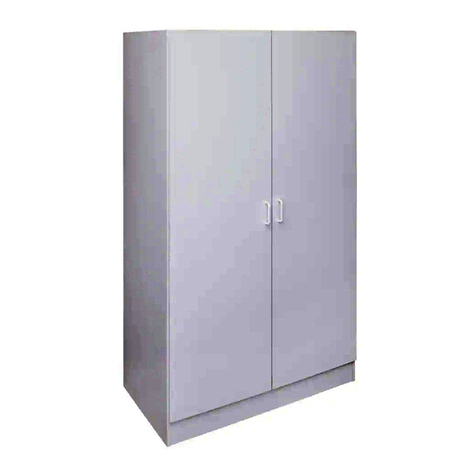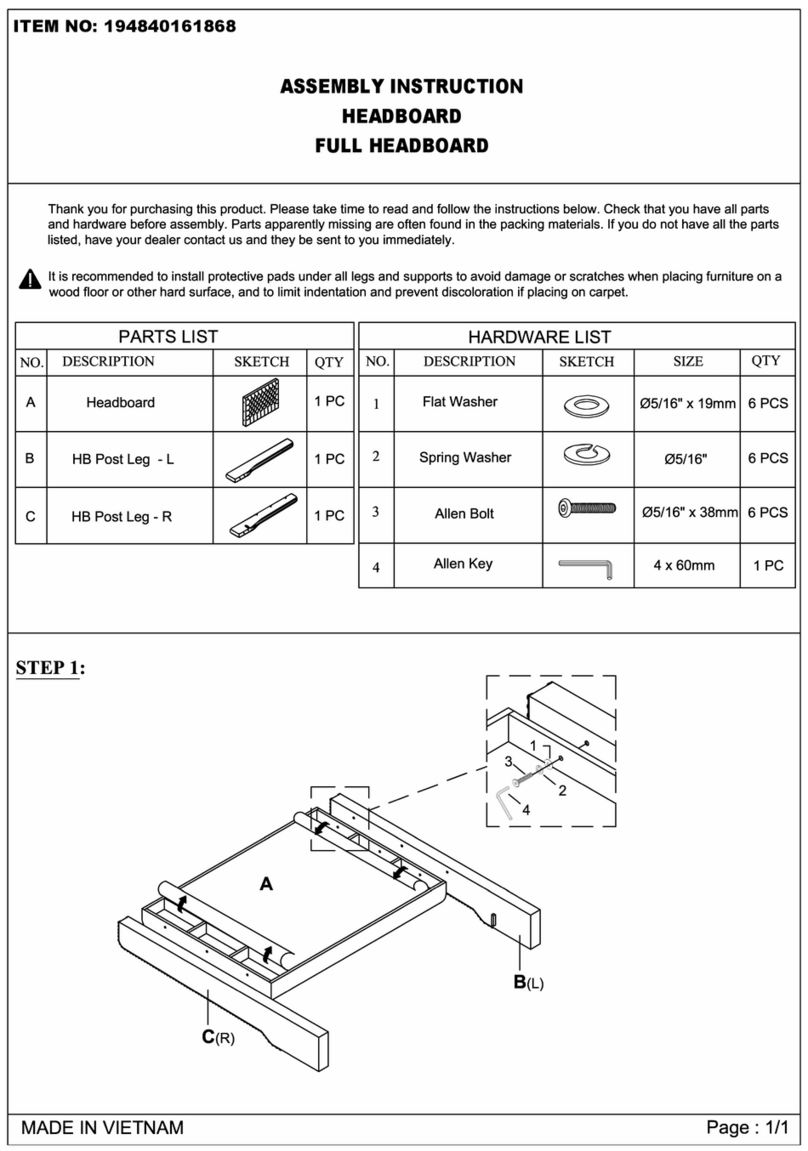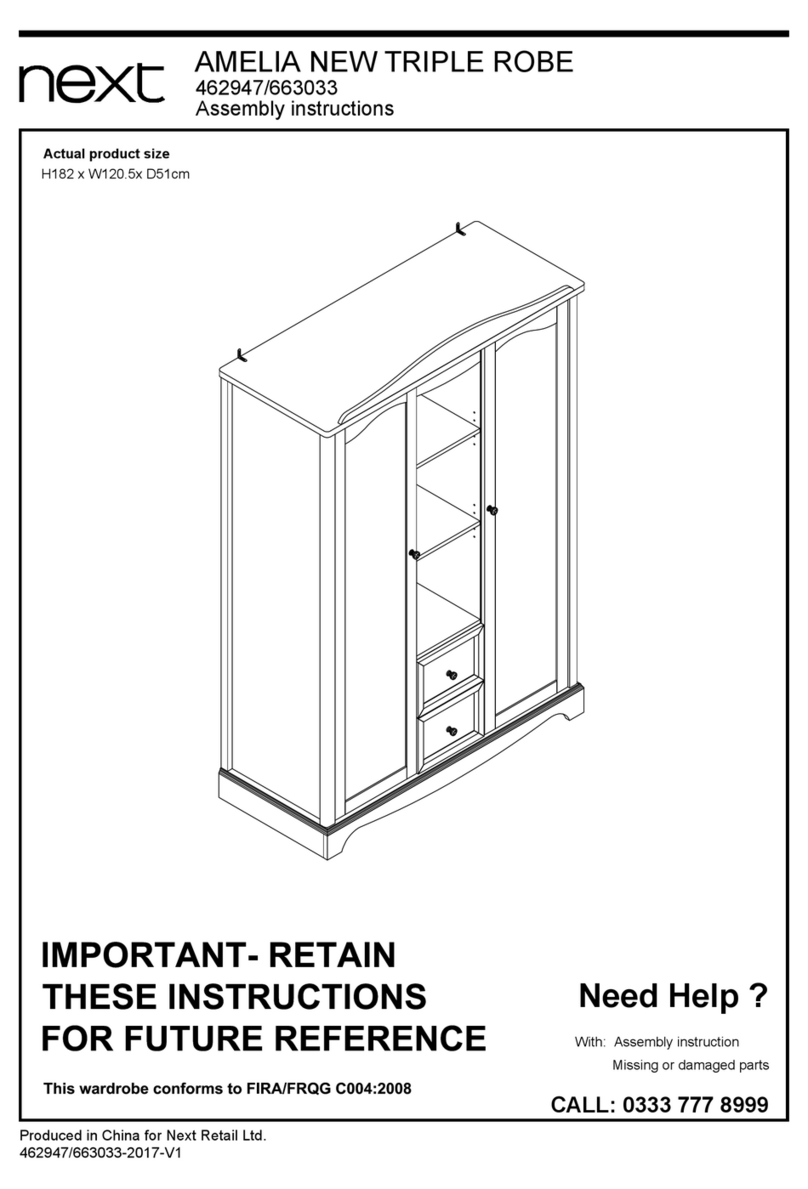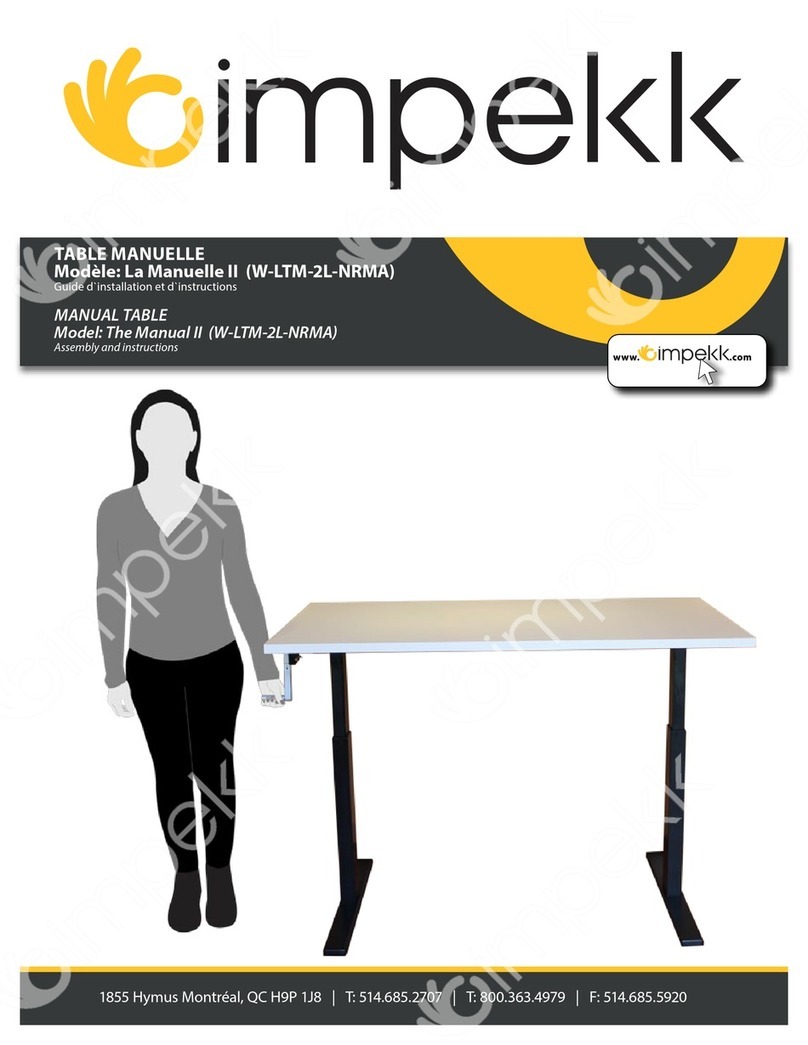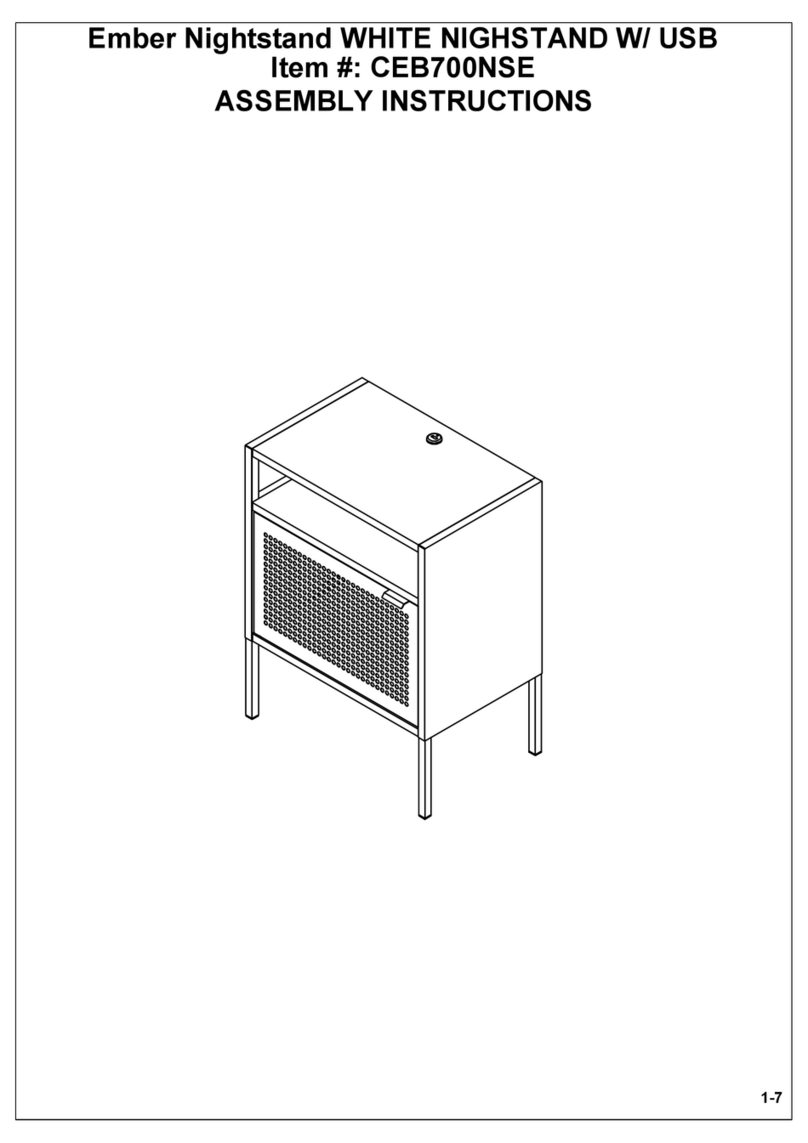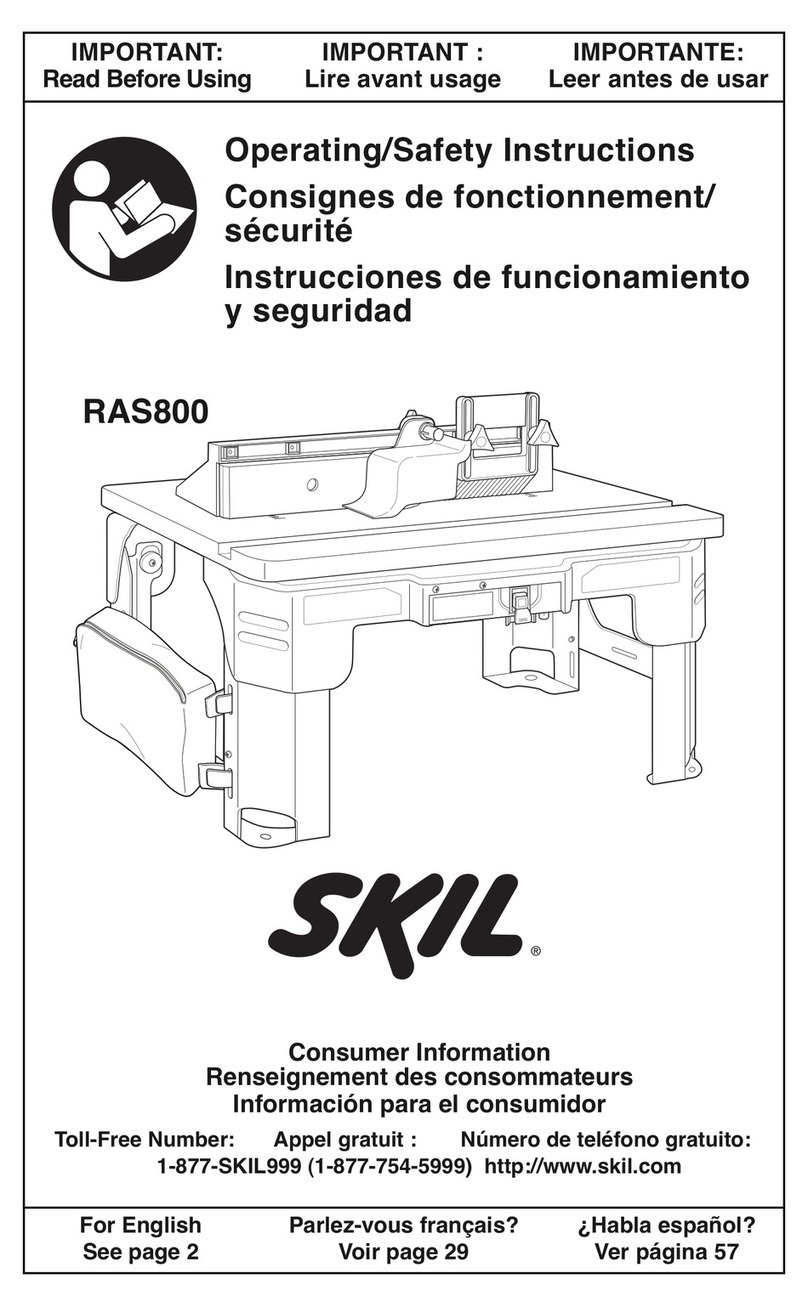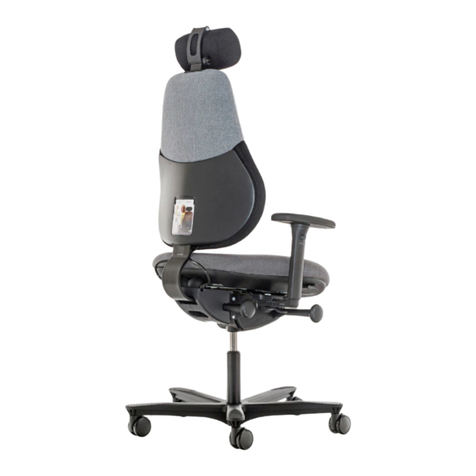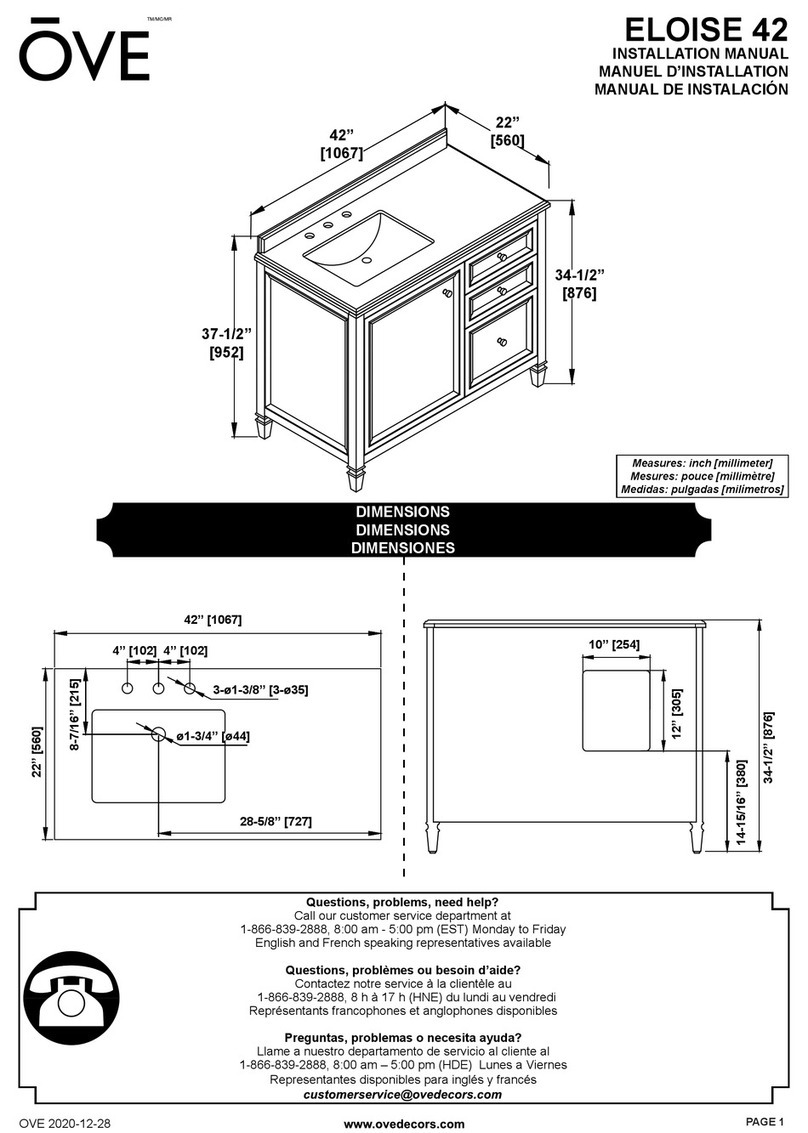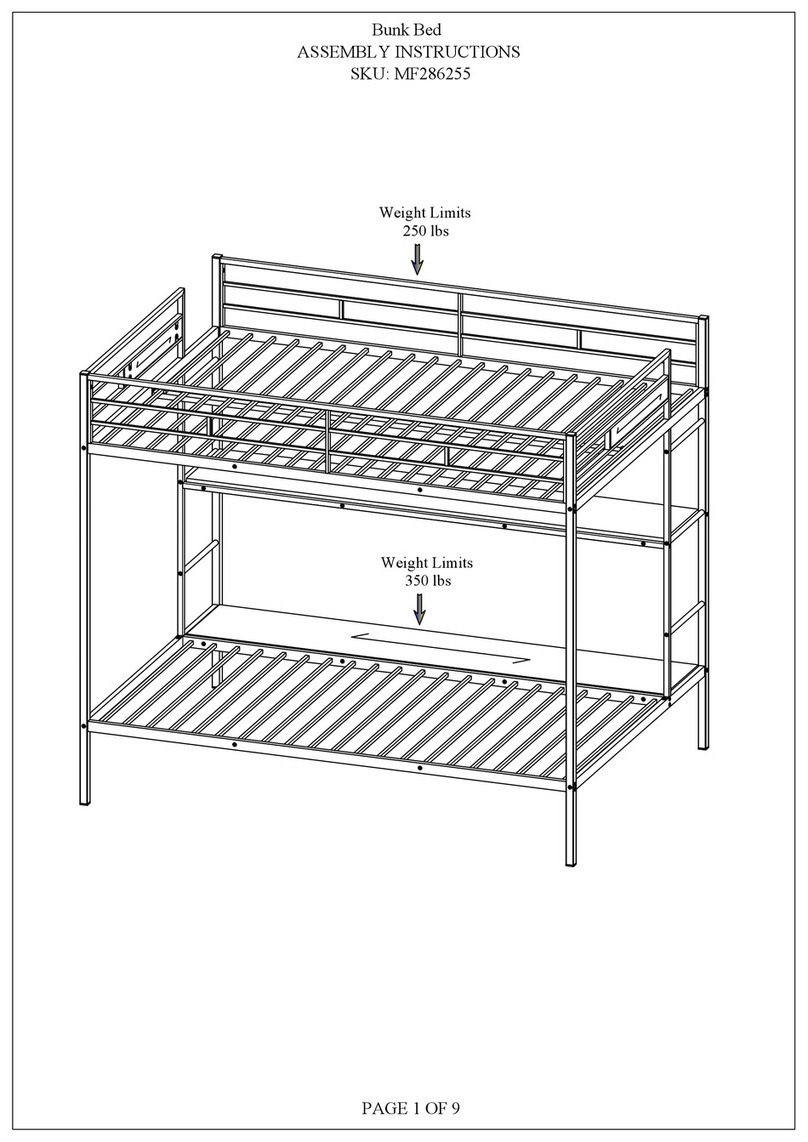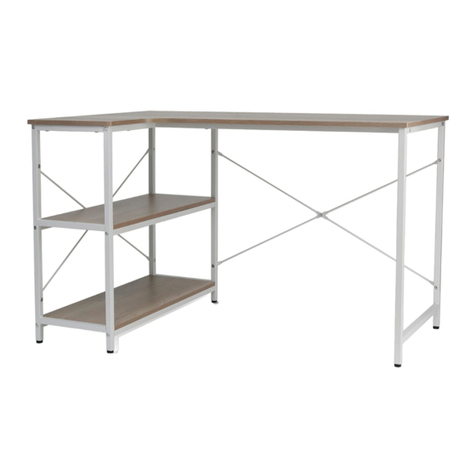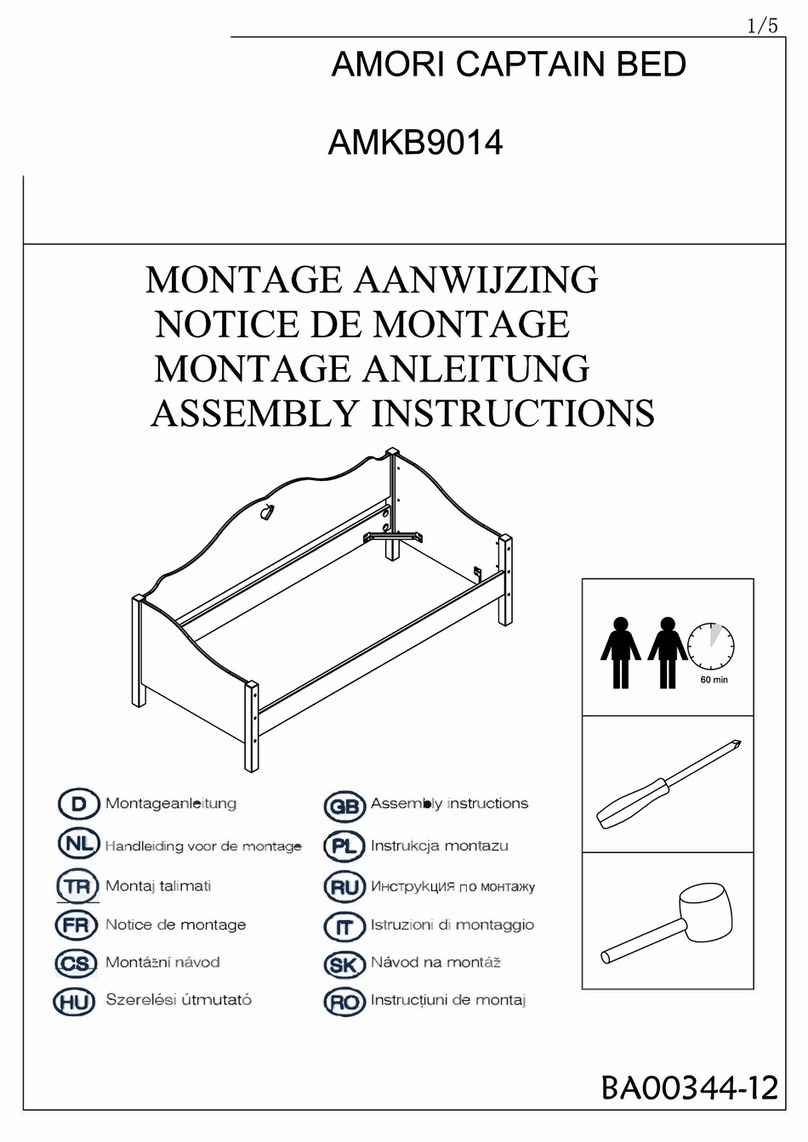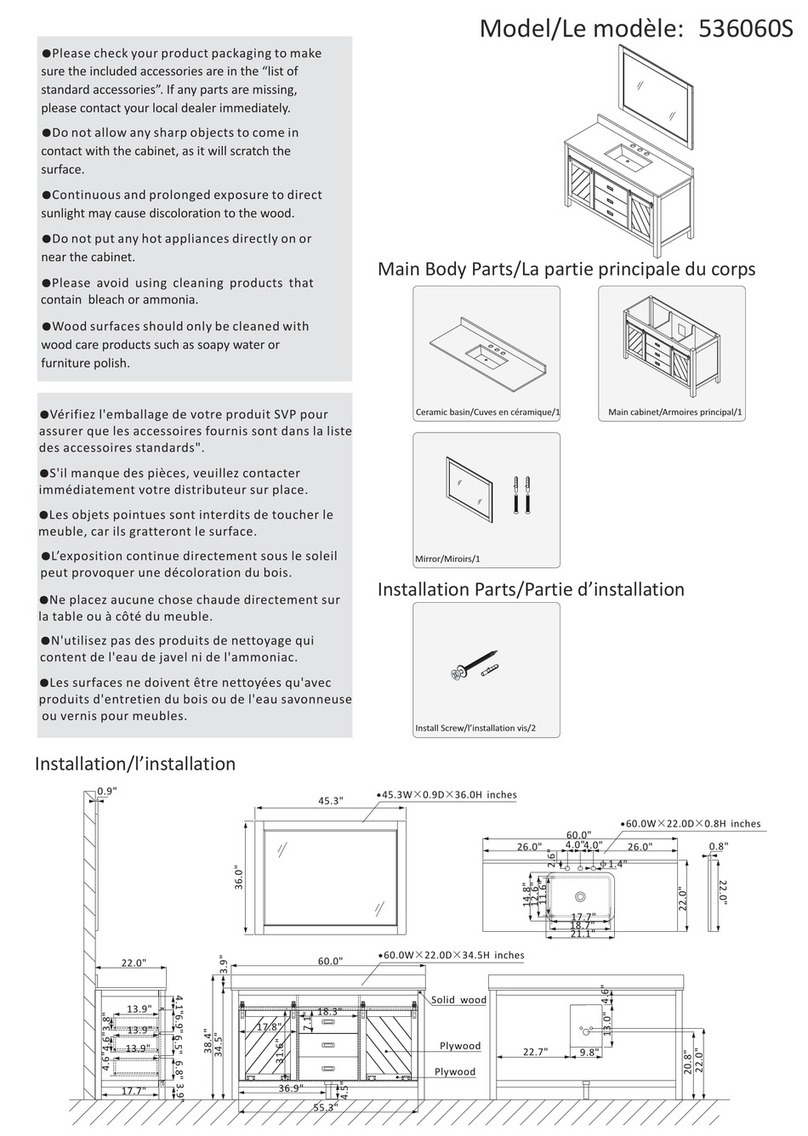
5
Never place your fingers near a spinning bit or under the guard when the router is
plugged in. Such precautionary safety measures reduce the risk of injury.
Never hold the workpiece on the outfeed side of the bit. Pressing the workpiece against
the outfeed side of the fence may cause material binding and possible kickback, pulling your
hand into the bit.
Guide the workpiece with the fence to maintain control of the workpiece. Do not place
the workpiece between the router bit and fence while routing the edge. This placement
will cause the material to become wedged, making kickback possible.
Only use routers for working with wood, wood-like products, plastic, or laminates. Do
not use router and router table for cutting or shaping metals. Be sure workpiece does
not contain nails or other hard objects. Cutting nails may cause loss of control of the tool or
workpiece.
Never start the tool when the bit is engaged in the material. The bit-cutting edge may grab
the material, causing loss of control of the workpiece.
Feed the workpiece only against the rotation of the bit. Do not “back feed” the
workpiece into the bit. The bit rotates counterclockwise as viewed from the top of the table.
“Back feeding” will cause the workpiece to “climb” up on the bit, pulling the workpiece and
possibly your hands into the rotating bit.
Do not feed the workpiece into the bit where the majority of the workpiece is between
the fence and the bit. This creates a “fence trap” which is a hazardous situation due to the bit
being exposed. This will cause the work to “climb-cut” away from the tabletop and may lead to
loss of control during operation.
Do not cut material that is warped, wobbly, or otherwise unstable. The router table is
designed to cut flat, straight, and squared materials. If the material is slightly curved
but otherwise stable, cut the material with the concave side against the table or fence.
Cutting the material with the concave side up or away from the table may cause the warped or
wobbly material to roll and kick back, causing the user to lose control.
Use auxiliary infeed and outfeed supports for long or wide workpieces. Oversize
workpieces without adequate support can ip off the table or cause the table to tip.
Use push stick, vertically and horizontally mounted featherboards (spring sticks), and
other jigs to hold down the workpiece. Push sticks, featherboards, and jigs eliminate the
need to hold the workpiece near the spinning bit.
Never let go of the workpiece when routing until the cut has been completed and the
workpiece is completely clear of the bit. Such precautionary safety measures reduce the
risk of injury and property damage. Featherboards aid in holding the workpiece in position
when routing on a router table. They are not intended to hold the workpiece in place alone
when the workpiece is in contact with the bit, or at any other time when the bit is turning.
Always hold the workpiece against the router table fence when routing. Such
precautionary measures increase accuracy in routing and improve control of the workpiece,
reducing the risk of injury.
Never leave the router unattended while it is running or before it comes to a complete
stop. Such precautionary safety measures reduce the risk of injury and property damage.
Do not use the table as a workbench or work surface. Using it for purposes other than
routing may cause damage and make it unsafe to use in routing.
Never stand on the table or use as a ladder or scaffolding. The table could tip or the cutting
tool could be accidentally contacted.
When servicing the tool, use only recommended SKIL replacement parts. Use of
unauthorized parts or failure to follow maintenance instructions can result in personal injury.

